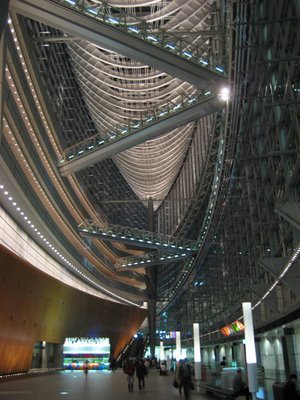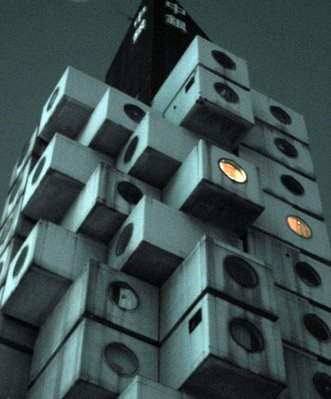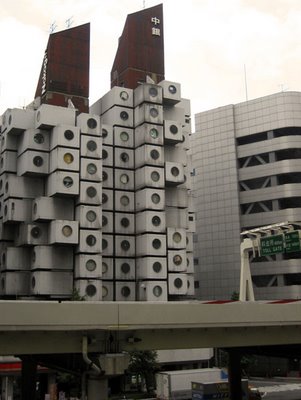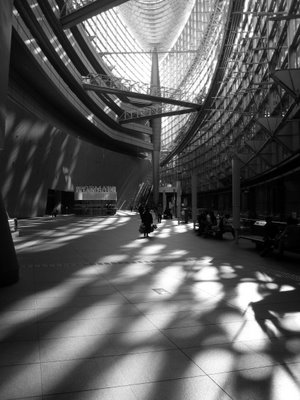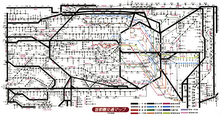Under the Bridge II.
One of my favorite things about Tokyo is the way in which spaces are used: under bridges, highways, expressways - any place an opportunity exists. In most cities, major transit routes effectively create walls or dead zones in the urban fabric. Here, the richness and vitality of Tokyo's urban character is allowed to extend in a relatively continuous fashion as automobiles and trains pass overhead. Eatery Clinging to Overpass.
Eatery Clinging to Overpass.
Small-scale spaces bring a strong sense of intimacy and humanity to a metropolitan area of nearly 35 million people. Economically, these spaces are more egalitarian. They have relatively lower rents which allow more people to own and run businesses, often in high-profile places. Ginza 9.
Ginza 9.
Conversely, even upscale boutiques and restaurants occupy the spaces below expressways and railways - especially in Ginza.  Yamanote Train Line Above, Ameyoko Market Below.
Yamanote Train Line Above, Ameyoko Market Below.
Below these tracks lie some of my favorite haunts, from inexpensive and delicious kaiten-zushi, or conveyor belt sushi restaurants, to yakitoris that serve scrumptious BBQ on skewers, edamame, and tasty cold Sapporo or sake. And let's not forget my favorite noodle place, which serves up piping hot soba, or buckwheat noodles with crispy tempura on top.
Before I get carried away on a culinary track - the importance here is that in Tokyo, highly memorable spaces are created in spaces that are ordinarily ignored by many other cities in the world.
T


